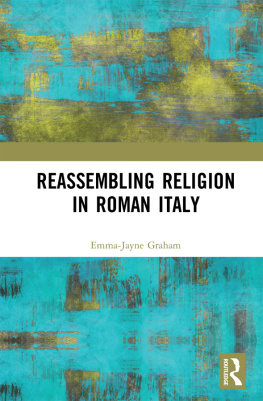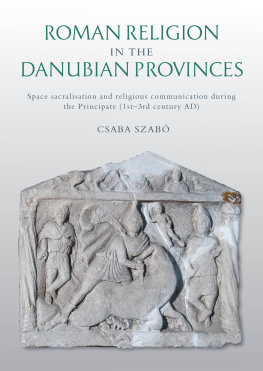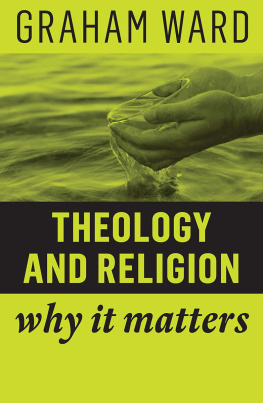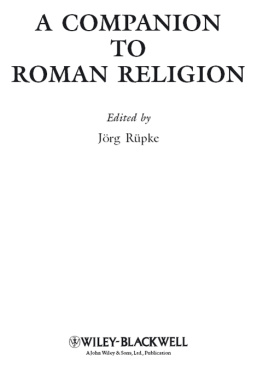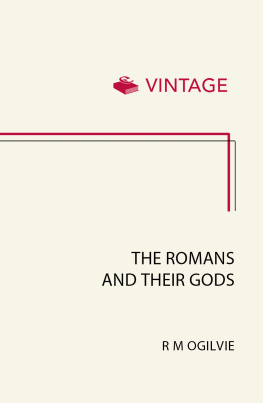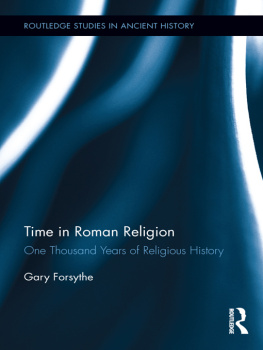Reassembling Religion in Roman Italy
This book examines the ways in which lived religion in Roman Italy involved personal and communal experiences of the religious agency generated when ritualised activities caused human and more-than-human things to become bundled together into relational assemblages. Drawing upon broadly posthumanist and new materialist theories concerning the thingliness of things, it sets out to re-evaluate the role of the material world within Roman religion and to offer new perspectives on the formation of multi-scalar forms of ancient religious knowledge. It explores what happens when a materially informed approach is systematically applied to the investigation of typical questions about Roman religion such as: What did Romans understand religion to mean? What did religious experiences allow people to understand about the material world and their own place within it? How were experiences of ritual connected with shared beliefs or concepts about the relationship between the mortal and divine worlds? How was divinity constructed and perceived? To answer these questions, it gathers and evaluates archaeological evidence associated with a series of case studies. Each of these focuses on a key component of the ritualised assemblages shown to have produced Roman religious agency place, objects, bodies, and divinity and centres on an examination of experiences of lived religion as it related to the contexts of monumentalised sanctuaries, cult instruments used in public sacrifice, anatomical votive offerings, cult images and the qualities of divinity, and magic as a situationally specific form of religious knowledge. By breaking down and then reconstructing the ritualised assemblages that generated and sustained Roman religion, this book makes the case for adopting a material approach to the study of ancient lived religion.
Emma-Jayne Graham is Senior Lecturer in Classical Studies at The Open University, UK. Her research focuses on aspects of material religion, the archaeology of Roman Italy, mortuary practices, and ancient disability. She is co-founder of TheVotivesProject.org.
This compelling new book offers an entirely fresh approach to Roman religion, bringing some exhilarating theoretical perspectives to bear on a series of well-chosen archaeological case studies. Emma-Jayne Graham argues persuasively and systematically for a materially informed approach to Roman religion, drawing on current work in the areas of posthumanism, new materialism, lived religion and sensory studies. Her clear and accessible text engages with some of the most vital questions that face scholars of Roman religion and materiality today. Reassembling Roman Religion will change how we think about the relationships between Roman people and their gods, and the other more-than-human things who lived among them.
Jessica Hughes, Senior Lecturer in Classical Studies at The Open University, UK
Reassembling Religion in Roman Italy
Emma-Jayne Graham

First published 2021
by Routledge
2 Park Square, Milton Park, Abingdon, Oxon OX14 4RN
and by Routledge
52 Vanderbilt Avenue, New York, NY 10017
Routledge is an imprint of the Taylor & Francis Group, an informa business
2021 Emma-Jayne Graham
The right of Emma-Jayne Graham to be identified as author of this work has been asserted by her in accordance with sections 77 and 78 of the Copyright, Designs and Patents Act 1988.
All rights reserved. No part of this book may be reprinted or reproduced or utilised in any form or by any electronic, mechanical, or other means, now known or hereafter invented, including photocopying and recording, or in any information storage or retrieval system, without permission in writing from the publishers.
Trademark notice: Product or corporate names may be trademarks or registered trademarks, and are used only for identification and explanation without intent to infringe.
British Library Cataloguing-in-Publication Data
A catalogue record for this book is available from the British Library
Library of Congress Cataloging-in-Publication Data
Names: Graham, Emma-Jayne, author.
Title: Reassembling religion in Roman Italy / Emma-Jayne Graham, The Open University.
Description: Abingdon, Oxon ; New York, NY : Routledge, 2021. | Includes bibliographical references and index. |
Identifiers: LCCN 2020023578 (print) | LCCN 2020023579 (ebook) | ISBN 9781138282711 (hbk) | ISBN 9781315270562 (ebk)
Subjects: LCSH: RomeReligious life and customs. | RomeReligion.
Classification: LCC BL803 .G73 2021 (print) | LCC BL803 (ebook) | DDC 292.07dc23
LC record available at https://lccn.loc.gov/2020023578
LC ebook record available at https://lccn.loc.gov/2020023579
ISBN: 978-1-138-28271-1 (hbk)
ISBN: 978-1-315-27056-2 (ebk)
Typeset in Times New Roman
by Apex CoVantage, LLC
For Mum and Dad
Contents
Guide
The origins of this book lie in my wish to bring together the disparate strands of research that I have been pursuing over the last decade concerning the body, sensory experience, material things, votive cult, and place, as well as the range of theoretical perspectives I have brought to the individual study of each. Little did I realise when I first set out with the intention of saying something more joined up about the relationship between these things that it would be assemblage theory itself which would allow me to do that.
This is also a book that I hope will be disruptive. I hope it will challenge the reader to think outside of the traditional comfort zone that studies of ancient religion have built up around themselves over more than century. For this reason, I ask some intentionally difficult questions: What is religion? What is a god? What was ancient magic? How were material things active participants in ritual? I have asked these questions because they relate to fundamental aspects of ancient religion that we often take for granted and regularly leave unchallenged but which need constant and critical re-interrogation. I ask them also because I believe that the answers we can get when we approach these problems from an almost exclusively archaeological perspective, especially one informed by current theoretical models concerning material things, are quite surprisingly different from those with which many scholars of Roman religion are familiar. Re-materialising Roman religion means that the gods immediately appear closer and yet less definable, and means that religion makes sense as a strategy in the lives of individuals but multiplies exponentially every time we try to pin it down. Complex as they are, we need to pay attention to these more challenging questions and their sometimes unsettling answers if the discipline of ancient religious studies is to move forwards and keep pace with cognate areas within the arts and humanities and social sciences. So this book is intentionally provocative in terms of its questions, the evidence and methodologies that it employs, and the answers that it puts forward, in the hope that, even if the conclusions I draw do not find acceptance, at least in the asking and the answering they will encourage further critical reflection and prompt others to feel able to challenge the status quo.
This book is also the product of a complex assemblage of things, objects, places, institutions, events, cups of tea, and most importantly, people. Thanks to Amy, Lizzi, Ella, and the team at Routledge for your patience and guidance, and to the anonymous reviewer for their perceptive comments on the first draft of the manuscript. I am also especially grateful to the many museums, institutions, and individuals who provided photographs and granted permission to reproduce the images that appear in the chapters which follow. I would like to particularly thank archaeological illustrator Matilde Grimaldi for her excellent work on the maps, plans, and sanctuary elevations. Professor Luca Attenni and Professor Francesco Gabellone also very kindly allowed me to reproduce original artworks for Pantanacci and Tarracina, respectively, and my thanks also go to Liana Brent, who allowed me to use photographs from her very timely visit to Palestrina on a beautifully sunny day. The Faculty of Arts and Social Sciences at the Open University generously provided funding to cover all image reproduction costs, and I am indebted to Liam Baldwin in the Facultys Visual Resources Unit for researching, sourcing, and acquiring all of the images on my behalf. Some of the research was carried out during a number of short visits to the British School at Rome (BSR), where I was repeatedly reminded of the amazing resources and the generosity of the BSR Library and its staff, as well as everyone else at the BSR. I owe key aspects of at least two chapters to the time I was fortunate enough to spend there. Thanks also to the brilliant Open University Library staff, who managed to source a number of specialist books and articles when I needed them. Early versions of some chapters benefited from the positive responses of audiences at conferences and workshops in Rome (Sensing Divinity at the BSR/cole franaise de Rome), Eisenach (the final workshop of the LAR project), Canterbury (TRAC), and London (Institute of Classical Studies Sanctuaries and Experience and Kings College London The Forgotten Other, with particular thanks to my co-organiser Ellen Adams). I must express my thanks as well to everyone with whom I have discussed large or small aspects of the project over the years, including Jane Draycott and Helen Slaney, as well as those who helpfully shared their own work in progress with me. Thank you especially to all those of you with whom I had hasty conversations about very complicated ideas during conference tea breaks or over post-seminar dinners. Of course, any errors or omissions remain my own.

